Fishing Roundup: Don't blink, Atlantic 'season' for red snapper arrives soon; 'Cannonball run'
By the time we meet here again next week to view the local angling scene, that scene will be dominated by, yes, quite a scene.
Ponce Inlet, compared to normal days, will look like the Maitland Boulevard interchange on I-4. Next Friday (July 14), beginning at 12:01 a.m., the federally prescribed recreational season for red snapper begins.
Don’t dawdle, Skipper. It ends 48 hours later.
“It’s a joke,” says one local offshore captain, Scott Housel, whose “Sudden Strike” charter boat takes clients offshore nearly every day and, yep, brings in a ton of the fish that’s been deemed overfished by the feds for more than 25 years now.
“The population is strong. It’s about 80% of the fish we catch on a daily basis,” Capt. Scott says.
You hear that from offshore folks on every dock you visit.
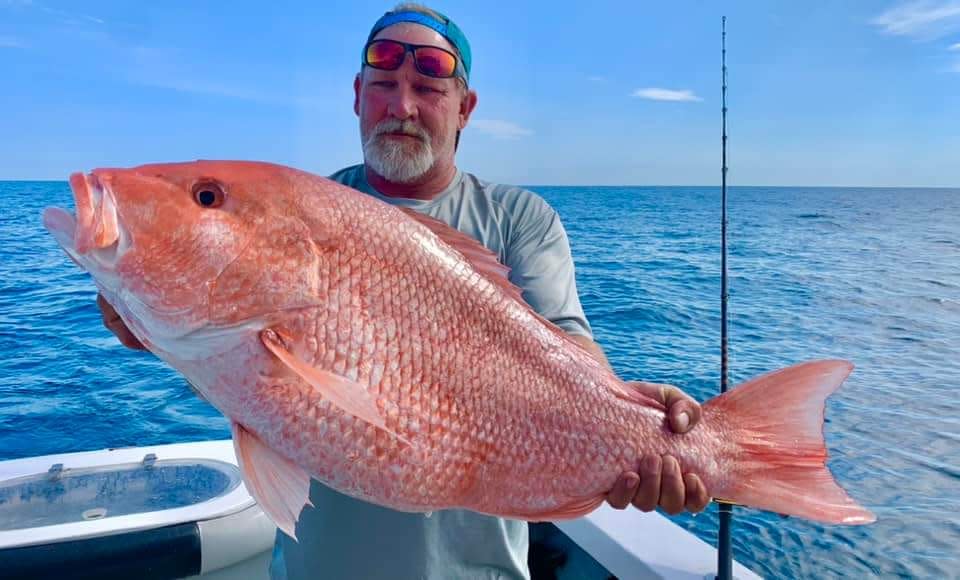
Yes, agreed, say the rule makers, but the demographics are their hang-up. Florida’s Fish and Wildlife Commission doesn’t make those rules for federal waters (three miles and out), but in this case the FWC is often left to explain the rationale, and the rationale here is age of fish.
“Recent population assessments indicate there are more red snapper in the Atlantic than there has been in many years, which is consistent with what anglers are seeing on the waters,” reads an FWC statement. “This is positive news and shows the stock is rebuilding.”
Here comes the however …
“However, the age composition of the stock, which is predominantly comprised of young fish, lacks many older, mature fish to sustain the population.”
“Baloney!” or something similar to that, is the reply you get from local offshore anglers.
Yes, you can technically fish for red snapper year-round in state waters, three miles and closer, but good luck. Quality reef fish, including the red snapper, are generally found 20+ miles offshore in very deep water.
Other forms of snapper — mutton, lane, mangrove, some others — remain open year-round beyond state waters, which means anglers must cull the catch and immediately return red snapper to the deep, using a descending device to better ensure survival.
Still, a red snapper in any manner of disarray is often targeted, quickly and lethally, by larger predators — particularly sharks, which are out there in such enormous numbers, we’re probably lucky they don’t have legs and imperialistic tendencies.
Adding insult to injury, Florida’s Gulf of Mexico fishermen get an actual “season” of red snapper fishing — June 1 to Aug. 25. The difference is oversight — the Gulf season is determined by the FWC and the governor’s office, while the Atlantic season is dictated by NOAA and the South Atlantic Fishery Management Council.
“A slap in the face,” says Capt. Mike Mulholland, who owns the commercial party boat, Sea Spirit, out of Ponce Inlet. “We have plenty of red snapper here. It’s all about control.”
One ugly offshoot from this two-day bonanza is the boat traffic it creates in and out of Ponce Inlet. If the marine conditions are dicy, as they were last year, some boats not fit for such conditions are still pointed to the deep sea because, hey, you only get two days.
You can easily draw your own conclusions about worst-case scenarios.
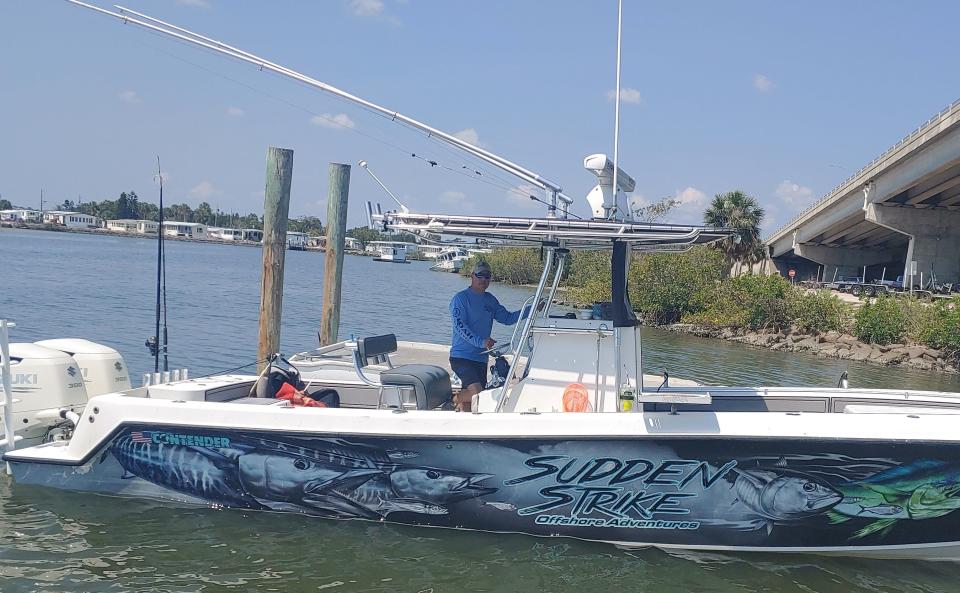
“They force people out in a two-day period,” Capt. Housel says. “Even when the weather is bad, you have boats overloaded with people and some boats that don’t even belong on the water out there.”
And once out there, even for those two days, the daily bag limit is one red snapper per angler.
“I call it the ‘Cannonball Run’ on water,” says Capt. Mulholland. “Every Tom, Dick and Harry goes out there to catch that one snapper — often not paying any attention to the sea condition.”
Yee-ha.
The shrimp run
Cross a bridge over the Halifax River these days, you might see a band of boats loitering to the left or right, massing in the channel, and on the bow someone hard at work, chucking a castnet time and time again.
The annual run of white shrimp is on, and unlike their red cousins in Oak Hill and Edgewater, who come out (and come up) at night, the whites make you work. When the reds are thick to the south, shrimpers head out at night and in the wee hours, simply dipping a net into the water and, over time, filling a five-gallon cooler (the limit) and heading home for some beheading and sleep.
White shrimp sleep at night and, during the day, scurry around, deeper in the water column, necessitating the proper opening of a castnet to bring them to the cooler. It’s equal parts art-form and taxing work. And on the back end, delicious, of course.
Halifax/Indian River fishing
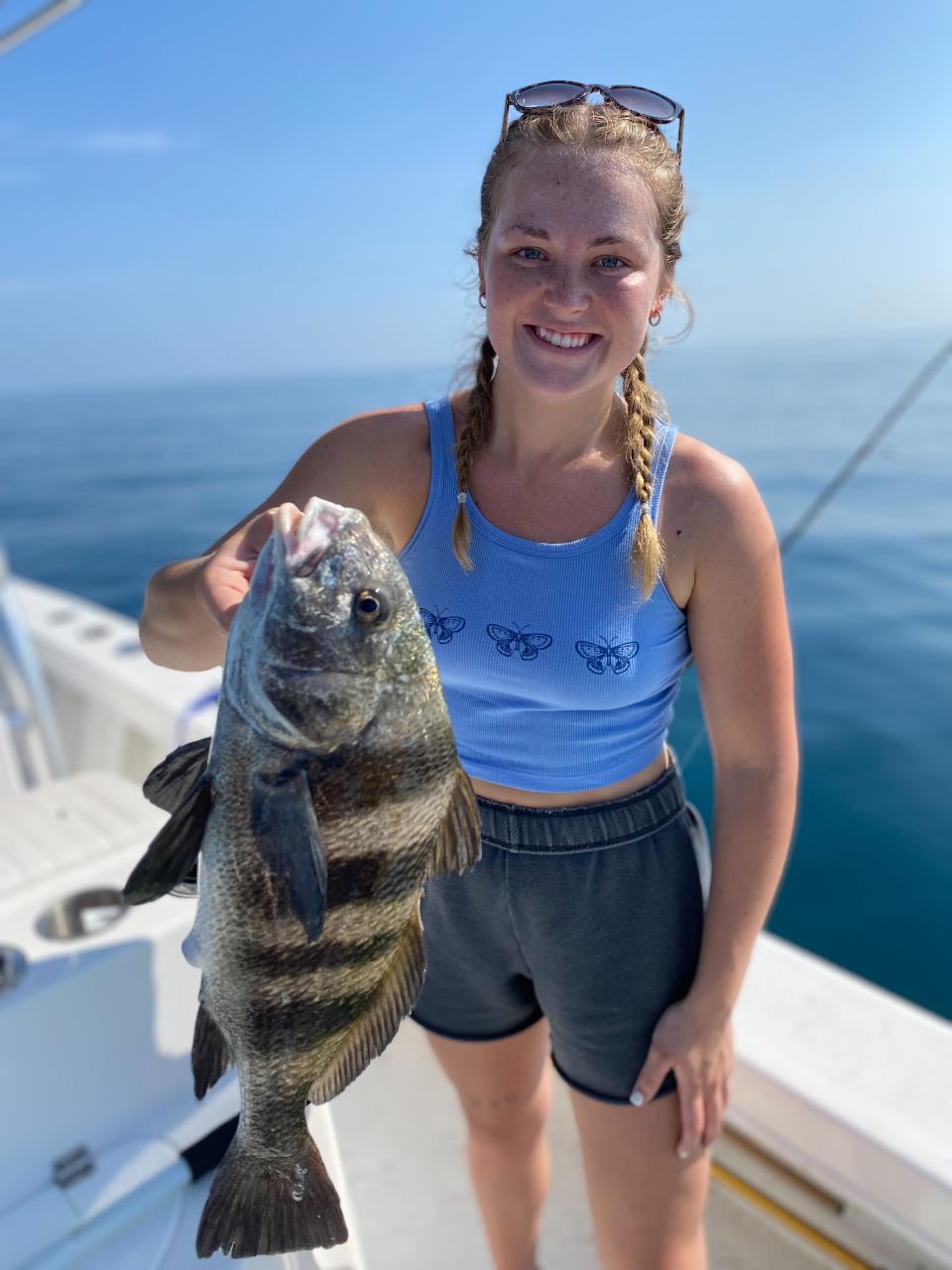
Neat fish story from Capt. Jeff Patterson (Pole Dancer charter). One of his anglers, Olivia Shaffer, brought up a black drum near Ponce Inlet this past week, and as it clanked into the boat it coughed up two shark teeth.
Later, when cleaning, Capt. Jeff says he found four more shark teeth in the fish’s stomach. What the …?
“They’re bottom-feeders,” he explains. “If they’re eating a crab or a shrimp or something else off of the bottom, they’re going to suck up sand and shells as well.”
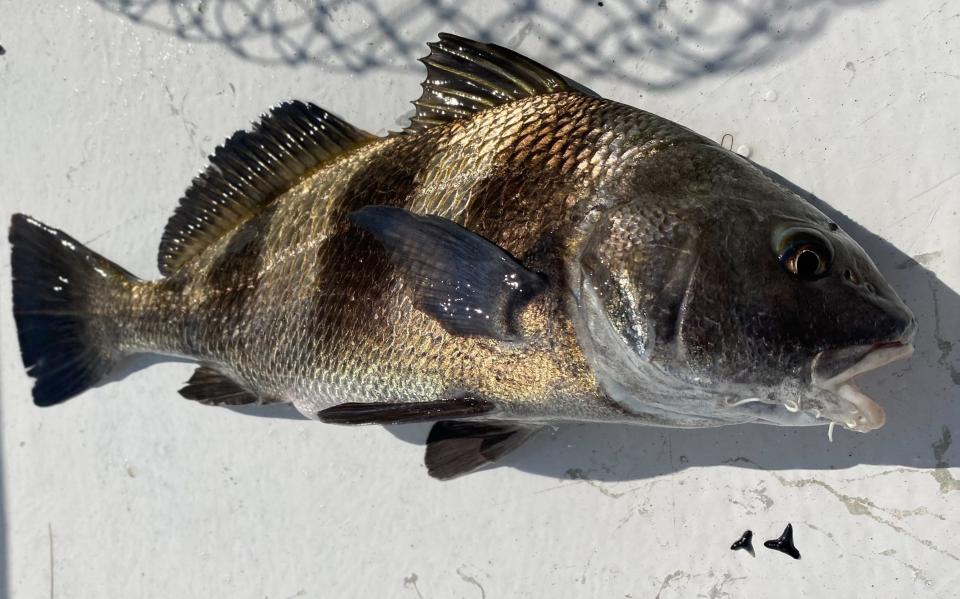
And a wayward shark tooth!
“There was also a bunch of shells in its stomach,” Capt. Jeff says. “They have very hard crushers in their throat that help break these things up smaller to be able to digest.”
Elsewhere, he said the week was quite productive, with a lot of catch-and-release snook and tarpon in the Ponce Inlet area, and as happens this time of year, “the mangrove snapper bite has been wide open.”
Art Mowery says croakers and pinfish have been useful bait in the Edgewater and Oak Hill area, but early and late is a must now that we’re neck-deep into summer.
Ike Leary (Granada Bait & Tackle) was surprised to see a grouper, normally an offshore target, caught off the floating dock near his shop.
To the north a bit at High Bridge, Capt. Jamie Thrappas (Yellow Dawg Bait & Tackle) reports a “pretty good flounder bite going on right now.”
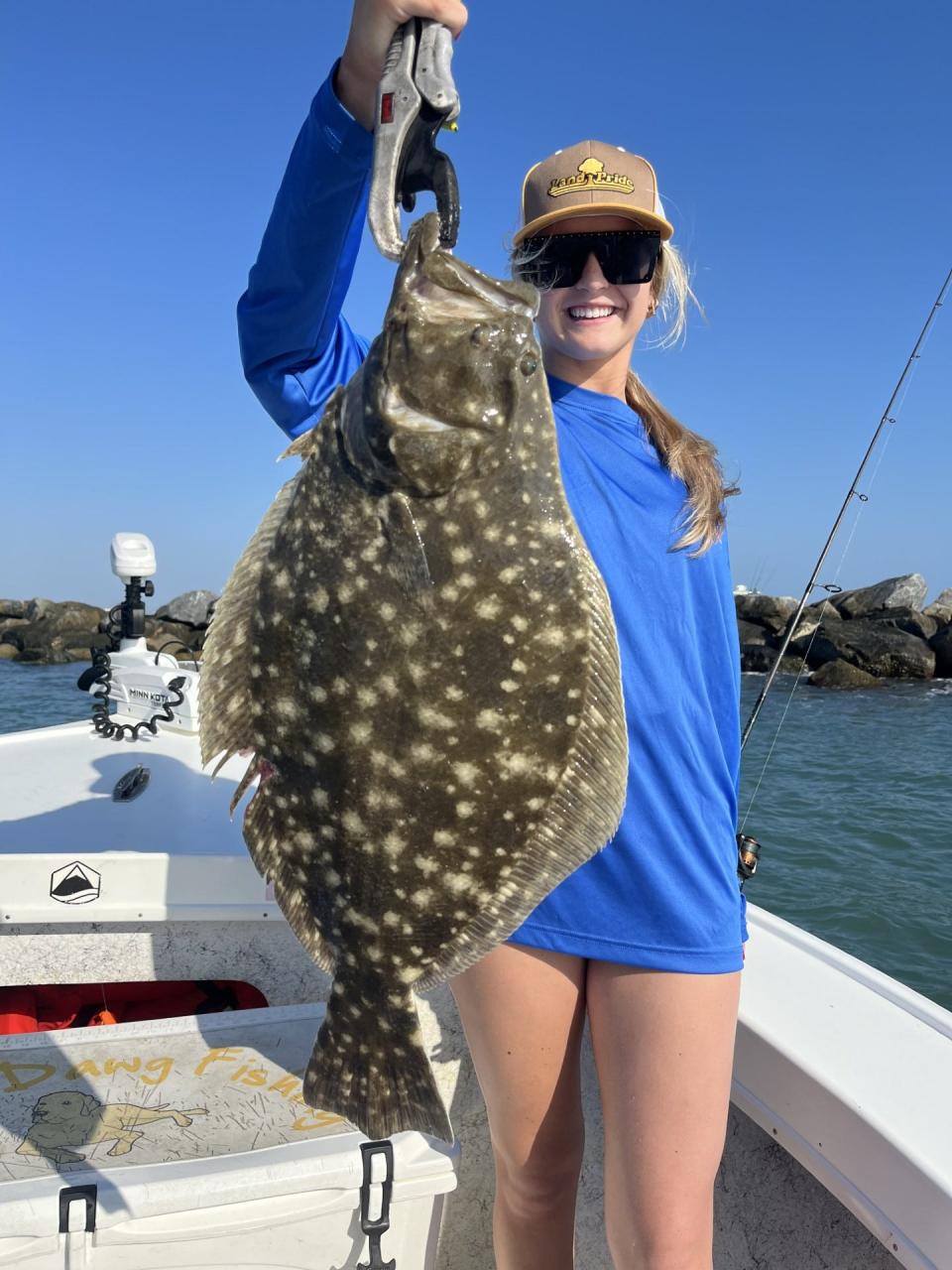
While mud minnows and live shrimp remain proper attractions, Capt. Jamie says “small soft plastics, like paddle tails and gulp mullet, will also get you a few.”
Reds and snook are being found, but again, early and late.
Offshore
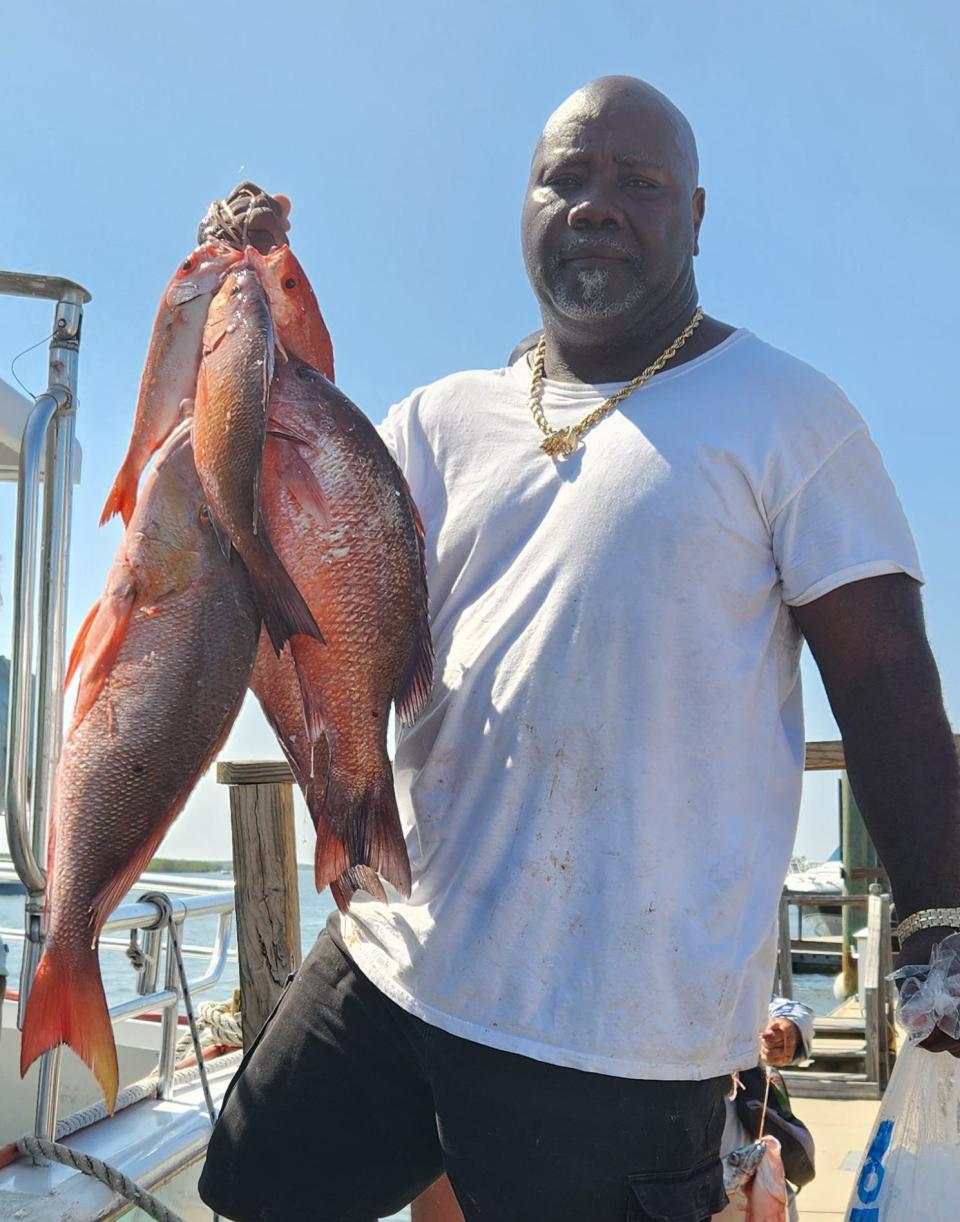
It’s not just the inshore anglers who often find mangrove snapper in summertime. Off the coast, out into depths of 100-120 feet, Capt. Scott Housel (Sudden Strike) says the mangrove bite “has been on fire.”
“Not too much happening on the closer artificial reefs on the bottom,” he adds, “but there are a few kingfish around, trolling. The shark bite continues along the beach and behind the shrimp boats.”
The full moon might be credited for a few wahoo catches, says Capt. Scott, who also reports some catches of mahi and blackfin tuna out beyond the 28 Ledge.
Along with the usual array of legal snapper, the Sea Spirit, out of Ponce Inlet, has also been bringing up good-sized grouper.
Surf
Whiting is still the best bet, though a few pompano are still hanging around. Must’ve missed the northbound bus.
Also, more and more chatter about palometa, the smaller cousin to the pomp and permit. Small baits on the bottom of nearshore troughs might find some, and once caught, they’re known to put up a quality pound-for-pound tussle. Small filets, but some compare it to pompano and some actually prefer it. Go figure.
St. Johns
“The fishing is actually pretty good right now but nobody is fishing,” Kerry McPherson says from his South Moon Fish Camp in Astor.
His recent crowd was mostly partiers, not fishermen, enjoying the long Fourth of July weekend. But one group got into some specks (or crappie, if you prefer) on the east side of Lake George near the old bombing range, where there’s a sunken barge (quality bombing!).
“People who know where the barge is sunk do pretty well there with crappie,” Kerry says.
Striped bass are still hanging out around the mouths of the springs.
Hook, line and clicker: Send us your fish pics
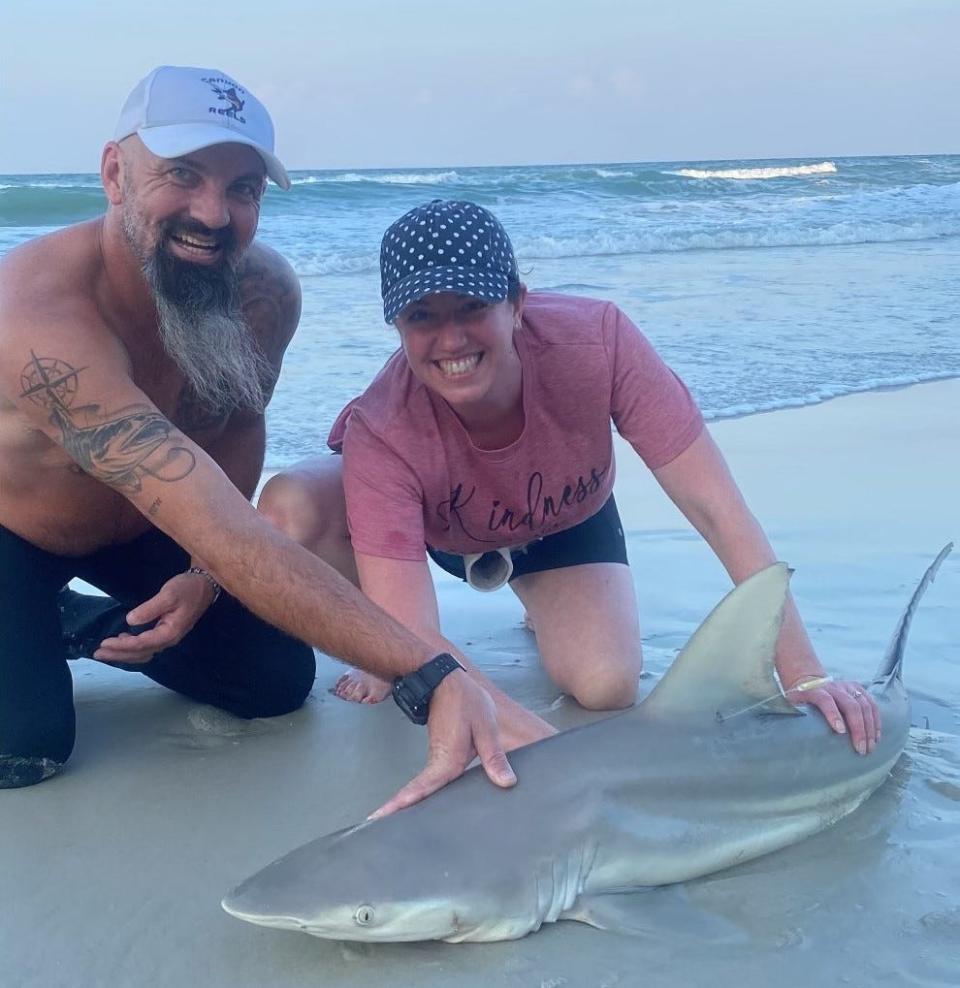
We want to see your most recent catch. Email your fish photos to ken.willis@news-jrnl.com.
Please include first and last name of angler(s), as well as type of fish (we're occasionally stumped). All are included with our online fishing report, and some occasionally make the print edition.
Do I need a fishing license?
You can find all the license info, including exemptions, on Florida's Fish and Wildlife Commission website: MyFWC.com. But the basics are: No: If you're 65 or older, 15 or younger, you don't need a license. No: If you're fishing with a licensed guide or charter boat, both of which purchase commercial licenses that cover their customers. Yes: Most everyone else, including visitors from other states. Yes: Even if you're a shore-based angler (shoreline, dock, pier, bridge, etc.). However: The shore-based license is free . . . But: You still need to register for that free license.
Where do I get a license and what does it cost?
Many bait shops sell licenses, as do the bigger retailers (Bass, Dick's, Walmart, etc.). Florida's FWC uses a third-party site for buying or renewing fishing licenses: GoOutdoorsFlorida.com. The cost: $17 for an annual license. Don't forget: Whether you're fishing fresh or saltwater, you need the specific license. Freshwater and saltwater licenses are both $17 annually.
I’m here on vacation, do I need a license?
Yes you do, and they're also available at GoOutdoorsFlorida.com or certain bait shops and big retailers. Cost: $17 for three days, $30 for seven days, $47 for a year.Also: Non-residents need to purchase that license even if they're just fishing from shoreline or shore-based structures. (Florida residents need that license, too, but they're free.)
This article originally appeared on The Daytona Beach News-Journal: Red snapper 'season' in Atlantic nears; 'Cannonball Run on water'

